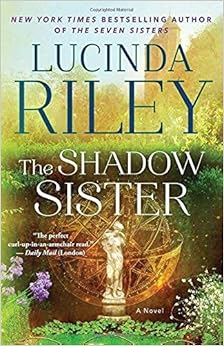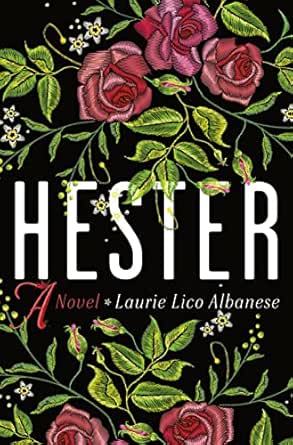3 Stars
This is my first book by this Turkish, Nobel Prize-winning
writer, so I don’t know if it’s representative of his work, but I found it
somewhat tedious.
The setting is 1901 on the fictional Eastern Mediterranean
island of Mingheria which is part of the Ottoman Empire. A plague has broken out so a quarantine
expert, Bonkowski Pasha, is sent to bring the outbreak to an end. He is murdered shortly after arrival, so the
Sultan sends his niece, Princess Pakize, daughter of the brother he deposed,
and her husband, Dr. Nuri, to control the spread of the plague and to discover
the identity of Bonkowski Pasha’s murderer.
What follows is a detailed description of attempts to stop the plague
and the social and political upheaval resulting from those attempts.
In a preface, the supposed author claims that she is writing
“both a historical novel and a history written in the form of a novel.” She has access to letters written by Princess
Pakize during her time on Mingheria, but, though the novel gives the princess’s
perspective of events, that of other characters is also given: the governor of the island, Sami Pasha;
Bonkowski Pasha; Dr. Nuri; the leader of her security detail, Major Kâmil; and
Sheikh Hamdullah, among others.
What is noteworthy is the world-building. Readers cannot but be convinced that
Mingheria exists because we are told about its history, geography, economics,
and politics. The island’s ethnic
(Greek, Turkish, Mingherian) and religious (Muslim, Orthodox Christian) groups
are detailed. Businesses, buildings, and
streets in the capital of Arkaz are described.
The effects of the plague on the island’s residents are
detailed but so are the measures taken to control its spread. What I found especially interesting is that
many of those measures are identical to those we recently faced with our own
pandemic: distancing, isolation,
quarantine, alcohol-based disinfectants, closing businesses, suspending
religious gatherings, restricting the size of gatherings, ventilation, curfews,
and masking. Dr. Nuri admits “how
frighteningly vague the medical community’s understanding of the plague was.”
The concerns expressed read like those we heard during
Covid: “There were also people who were
exposed to the microbe that didn’t fall ill or even realize they had it” and
“the hospitals will run out of beds, and there won’t be enough doctors to deal
with the sick” and shops “stationed someone at their door to spray
disinfectant” and “plague victims might cough in your face at any moment and
infect you too” and ever-changing “new measures were added every day” and “’Do
you think the plague can be passed through food?’ and “the fear of the disease
meant that nobody was really greeting and embracing each other” and “many other
diseases had similar symptoms” and “Personal bonds had weakened, friendships
had suffered” and “need to disinfect or sanitize things like paper, letters,
and books” and whether the disease will disappear with the arrival of a new
season.
The reactions of the people to the measures are also
identical to those seen in the last couple of years. Some worry about the effect of closures on
their businesses, “complaining that quarantine was damaging their profits”;
some “mothers and fathers could not stay at home to look after [children]”; and
“some shopkeepers and bakers had taken to stockpiling goods, while others were
hiking up their prices.” Some people
follow the rules, “never left their homes anymore, and wouldn’t come in for
work,” while others are plague deniers who continue to live as normal. Some flout the rules. Some believe they will be immune if they
carry prayer sheets or wear amulets or perform certain rituals. There are rumours and conspiracy theories
about the origins of the plague; the doctors who come to the island to help are
accused of bringing the plague with them.
Politicians, medical professionals, and citizens disagree about what
measures need to be taken, and protests against plague measures are held. People who flee the city to a rural region
“were quickly driven away by locals who accused them of having the
plague.” Human nature seems not to have
changed, and we seem not to have learned from history.
At 700+ pages, this is a lengthy book. Its slow pace meant I often struggled to
maintain interest. There is a great deal
of telling, as opposed to showing, and many digressions. More than once the author makes comments like
“Our readers must not think that we are straying too far from our story if we
too take a moment now to examine . . .” and has characters deliver “a
needlessly elaborate disquisition.”
Irrelevant information is included.
For instance, when the governor’s armoured landau is first described, do
we really need to know that “he had commissioned Bald Kudret, Arkaz’s most
famous blacksmith to make the required sheets of armor”? Do we have to be told about a bee that flies
into the landau on one trip? What is the
purpose of being told about the ships that blockade the harbour: “the French Amiral Baudin, launched in 1883, was one hundred meters long; the
British HMS Prince George, launched
in 1895, was excellent in artillery”? Do
we have to know that a judge “had long, slender fingers, and delicate
handwriting”? There is such a thing as
too much information!
There is a lot of needless repetition. Almost every time Dr. Nuri appears, his
complete title is given: Prince Consort
Doctor Nuri. Another character’s felt
hat is mentioned 25 times. Sentences are
sometimes overly long: “The judge (and
former kadı) who would have ordinarily conducted the trial was Muzaffer
Effendi, sent from Istanbul to handle important cases involving murder, serious
injury, the abduction of young women for marriage, and blood feuds, without
these having to be referred to the courts in the Empire’s capital, but Muzaffer
Effendi was currently in the Maiden’s Tower, having been sent there by rowboat
in the middle of the night along with the insufficiently revolutionary mayor of
Teselli, Rahmetullah Effendi, so instead Sami Pasha had the elderly Christofi
Effendi of the rich Yannisgiorgis family, whom he knew through the French
consul, and who happened to be the only person on the island who’d studied law
in Europe (specifically in Paris), brought to the former State Hall and current
Ministerial Headquarters in his armored landau, instructing him upon his
arrival to kindly produce a judgment ‘in the European style.’” I count 148 words in that one sentence.
The book is critical of politicians of every stripe. The governor pays for his landau “with money
taken from the municipality’s eternally underfunded coffers”; another leader,
rather than focusing on the plague, is concerned “to see this own likeness and
the landscapes of Mingheria reproduced on these postage stamps” and
“fantasizing about all the new names he was going to give these places”; and
another “spent more time discussing [a predecessor’s] funeral arrangements, the
future of the Halifiye sect and lodge, and the emblems of the Queen.” There is certainly a criticism of modern
Turkey: “We should also note that the
custom of gunning journalists and writers down on the street with the tacit
backing of the state – a tradition that has now persisted for more than a
hundred years – was first born under the new regime of ‘freedom.’” (There is no doubt that the plague also
serves as a metaphor for the collapse of the Ottoman Empire.)
The book has 79 chapters and an overlong epilogue. (I found it rather ironic that in Chapter 56,
only two-thirds of the way through the book, the author states, “as we approach
the end of our novel-cum-history, I suppose I should finally reveal . . .
“) I finished it only because I felt
obligated to do so since I received a galley from the publisher in return for a
review. It is too long and dense and
perhaps, for me, too much a reminder of the Covid pandemic which has not yet
ended.
Note: I received a digital galley from the publisher via NetGalley.








